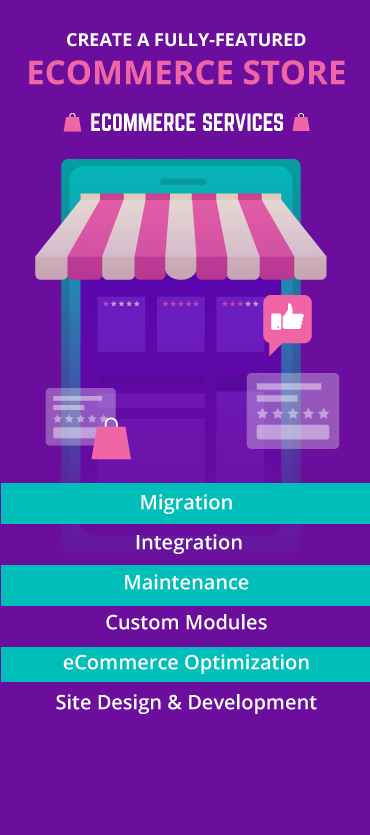Shopping cart abandonment is one of the most pressing challenges both small and large-scale eCommerce retailers face.
According to research by Baymard Institute, the average rate of online shopping cart abandonment is 70.19%.[i]
That’s a huge number, isn’t it? It means that for every 10 potential buyers, 7 leave without completing their purchase.
Therefore, it becomes essential for online retailers to combat cart abandonment to increase customer conversions and recapture lost revenue. They can turn missed opportunities into measurable gains by addressing key friction points in the checkout process and applying targeted marketing strategies.
In this blog post, we’ll explore 11 proven strategies and marketing tactics for reducing your online store’s cart abandonment rate.
Let’s turn those abandoned carts into completed checkouts.
Before we dive in, it is important to understand why customers abandon their shopping carts in the first place:
- High shipping costs
- Payment security concerns
- No checkout without signup/Confusing checkout
- Dissatisfactory return policy
- Limited payment options
- Slow website speed or crashes during checkout
- Unexpected taxes or fees at the final step
- Lack of preferred delivery options
- Complicated or lengthy checkout forms
So, how do you encourage these customers to engage, complete their purchase, and repeat buy?
Related Read: Learn From These Frightening Cart Abandonment Statistics
11 Proven Ways to Tackle Shopping Cart Abandonment
1. Provide Multiple Payment Options
Modern consumers expect a seamless and flexible checkout experience. Therefore, enabling various payment methods can cater to diverse preferences and reduce cart abandonment rates.
According to Baymard, 10% of online shoppers abandoned their carts because their preferred payment method wasn’t available.[ii] While this percentage may seem modest, it represents a substantial number of potential sales lost due to limited payment options.
To address this, consider integrating a range of payment methods into your checkout process, including:
- Credit and Debit Cards: Visa, MasterCard, American Express, etc.
- Digital Wallets: PayPal, Apple Pay, Google Pay, Samsung Pay
- Buy Now, Pay Later (BNPL) Services: Klarna, Afterpay, Affirm
- Bank Transfers and Direct Debits
By accommodating various payment preferences, you can enhance the customer experience and tap into broader market segments, potentially increasing conversion rates.
2. Implement Address Autocomplete and Validation
Typing full address details can slow down checkout and lead to input errors that frustrate customers. By integrating address autocomplete and validation APIs, like Google Places or AddressFinder, you can help users complete forms faster and accurately. However, to ensure accessibility and flexibility, also provide a manual entry option in case these APIs are unable to detect the user’s exact address.
This prevents delivery issues caused by incorrect information and creates a smoother checkout flow. When customers can breeze through the process without second-guessing their entries, they’re likely to follow through with their purchase.
3. Streamline Checkouts by Reducing Form Fields

An overloaded checkout form can discourage buyers right before the finish line. By cutting unnecessary fields, businesses can reduce friction, simplify decision-making, and create a smoother user experience.
So, only request essential information, like name, shipping address, and payment details, to keep the checkout process lean. Use a clean, single-column layout for easy scanning, and hide optional fields (such as “Address Line 2”) behind expandable links. Integrating auto-complete and address lookup features can further accelerate form completion and reduce errors.
To enhance the experience even more, enable guest checkout for first-time buyers and auto-fill information for returning customers when possible. Mobile users especially benefit from minimized input requirements and simplified navigation. The result? A faster, more intuitive checkout flow that enhances customer satisfaction.
4. Be Transparent About All Costs
About 39% of customers abandon their carts if the extra costs are too high.[iii] It is a good idea to inform your customers about all costs upfront, including shipping costs, the applied taxes, or any other fees on the product. This will reduce the chances of losing customers because of an unpredictable price increase while checking out.
Make pricing breakdowns visible from the product page to the cart preview and highlight available discounts or promotions. Transparency not only prevents abandonment but also builds trust, persuading customers to return and complete future purchases.
5. Include Security Symbols
Concerns about payment security are one of the main reasons for cart abandonment. Online shoppers are worried about the unethical use of their credit/debit card, stolen identities, or personal information. So, if customers don’t trust your site, they’ll probably abandon their cart.
To build trust and reduce drop-offs, display:
- SSL certificates: Show the padlock and “https” to indicate encrypted data.
- Trust seals (logos): Use symbols from Norton, McAfee, or TRUSTe, especially near checkout.
- Customer reviews and testimonials: Share feedback from verified buyers, especially those mentioning a secure checkout.
- Payment provider badges: Highlight trusted options like PayPal, Stripe, or Apple Pay.
- Real-time fraud protection messages: Reassure users with notices of AI-driven fraud detection.
Visible security symbols at checkout can strongly influence customer buying decisions and lower the abandonment rates.
6. Have a Solid Return and Refund Policy
67% of shoppers view a website’s return and exchange policy before purchasing to check whether returning unwanted products is complex or costly.[iv]
This indicates that better flexibility in the return of products can motivate hesitant shoppers to make a purchase.
To maximize trust and boost cart conversions, ensure your return policy includes:
- Which items are returnable
- What can be exchanged and under what conditions
- List of non-returnable/non-exchangeable products
- Return/exchange timeframes
- Acceptable item conditions for returns
- The step-by-step return/exchange process
- Info on return shipping (free or paid)
- A policy that is easily accessible across the site
7. Maintain Delivery Transparency
Long delivery times are a major contributor to cart abandonment, with 21% of shoppers dropping off when estimated shipping feels too slow.[v] In a world driven by instant gratification, delays can affect immediate conversions, increase return rates, and damage customer loyalty.
To combat this, brands should be transparent about shipping timelines at checkout, provide expedited options, and diversify carriers for flexibility. They can establish regional warehouses to reduce delivery times and maintain accurate inventory to prevent stockouts and order cancellations. They can also provide real-time tracking and communicate delays to strengthen customer trust and keep purchase momentum intact.
Integrate These Marketing Tactics to Combat Cart Abandonment
People abandon their shopping carts, mainly because they are not ready to buy and need time to make a decision. However, this does not mean that you can ignore those leads and take no action. There are many marketing techniques to re-invite the abandoned user and close the deal. Let’s discuss them!

8. Use Predictive AI to Prevent Cart Abandonment
Predictive AI analyzes real-time user behavior to detect signs of potential cart abandonment, such as prolonged hesitation, repeated item views, or sudden drop-offs. Based on this behavior, it triggers personalized interventions like pop-ups, product reminders, or exclusive offers tailored to each shopper’s intent.
What sets this approach apart is its ability to optimize incentives based on each customer’s behavior, ensuring offers drive conversions without disrupting profit margins.
The result? Businesses using predictive AI have seen an 18% reduction in cart abandonment, thanks to smarter targeting and timely engagement.[vi]
9. Bring Back Lost Shoppers by Running Retargeting Ads
Retargeting ads remain one of the most effective tactics for recovering abandoned carts and re-engaging interested shoppers. With an ROI potential of over 150%, retargeting provides a powerful way to bring qualified leads back to your sales pages.[vii]
These ads specifically target users who have already interacted with your site, such as those who viewed products or added items to their cart but didn’t complete the purchase. However, what makes retargeting even more effective is personalization. Rather than displaying generic brand ads, businesses now show dynamic creatives that feature the exact product a user abandoned.
For example, if someone added the “Gloria” shoes from Charlotte Stone to their cart but left the site, a retargeted ad could remind them of those shoes, include a limited-time offer, and drive them back to checkout. Segmenting retargeting audiences based on browsing behavior, time spent on product pages, or cart value can further enhance engagement and conversions.
10. Automate Email Campaigns
According to a study, sending a series of three cart abandonment emails can result in 69% more completed transactions than a single email would.[vii] Therefore, a sequence of abandoned cart emails will not only bring your customers back into the funnel but will also save you time in the process. To do this effectively, businesses can use integration tools such as:
- Maginate – A Magento Marketo Integration Connector that helps deliver a holistic customer experience by integrating Marketo capabilities into your Magento store and provides customers with personalized experiences. For the customers who did not complete the order, the connector helps track the information to set up nurture emails and send offers for conversion.
- Cartiveo – A Shopify Marketo Integration Connector that helps integrate Marketo capabilities into your Shopify store and provide personalized experiences for your customers. It syncs abandoned data to Marketo to set up nurture emails and help customers complete their order.
11. Use Live Chats
Live chat is an effective tool for reducing cart abandonment across any eCommerce platform. It enables businesses to engage shoppers in real time, answering questions about products, shipping, or returns, right when customers need support. This immediate assistance can help overcome objections, build trust, and encourage hesitant buyers to complete their purchase.
Many live chat solutions also integrate with messaging channels like email, social media, and mobile apps, enabling businesses to manage conversations from multiple touchpoints. Notably, a significant portion of live chat interactions happen while shoppers are in the buying mindset, making it a crucial conversion tool.
Wrapping Up
While every customer is different, most share one expectation.
A smooth, hassle-free checkout!
Yet, many businesses struggle to implement strategies that reduce cart abandonment rates. Whether setting up personalized retargeting ads, providing transparent delivery options, or reducing form fields, execution can be complex and time-consuming.
These challenges often include a lack of technical expertise, difficulty in choosing the right tools, poor integration between platforms, and limited resources to test & optimize new features. However, with an experienced eCommerce development partner, like Grazitti Interactive, businesses can bridge the gap between strategy and execution, streamlining their checkout flow, setting up smart automation, and driving conversions.
Let’s Transform Abandoned Carts into Revenue Wins. Talk to Experts!
Frequently Asked Questions (FAQs)
Question 1: What are proven cart abandonment solutions for eCommerce businesses in 2025?
Ans: In 2025, Top cart abandonment solutions include AI-driven personalization, exit-intent popups, segmented retargeting ads, and real-time support tools. These help recover shopping cart abandonment by targeting users based on behavior and improving the onsite experience.
Question 2: How can Shopify users reduce shopping cart abandonment with built-in tools and best practices?
Ans: To reduce cart abandonment on Shopify, you can use built-in features like dynamic checkout, Shopify Inbox, and automated recovery emails. Additionally, you can combine these with best practices like guest checkout, upfront shipping info, and simplified forms for better results.
Question 3: What is the most effective cart abandonment email strategy to recover lost sales?
Ans: A timely, personalized cart abandonment email, ideally sent within an hour, can boost recovery rates. While sharing it, you should include the abandoned item, a clear CTA, and trust signals like reviews or secure checkout badges to build confidence and drive action.
References:
[i], [ii], [iii] & [v] Baymard Institute
[iv] Meteor Space
[vi] Retail Touchpoints
[vii] Advanced Web Ranking
[viii] Nimbll












